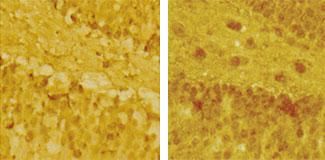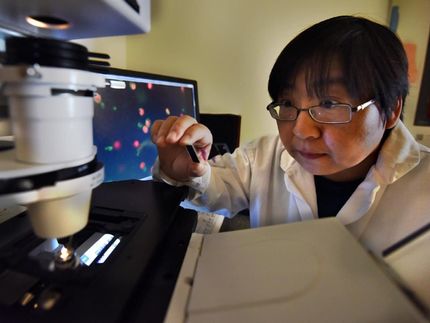Lengthening time a drug remains bound to a target may lead to improving diagnostics, therapy
Studies led by Stony Brook University professor of chemistry Peter J. Tonge indicate that modifications that enhance the time a drug remains bound to its target, or residence time, may lead to better diagnostic and therapeutic agents. Tonge presented these results at the American Society for biochemistry and Molecular Biology's annual meeting in a talk titled "Slow Onset inhibitors of Bacterial Fatty Acid Biosynthesis: Residence Time, In Vivo Activity and In Vivo Imaging."
"Our research team believes that many drugs are effective because they have long residence times on their target," says Tonge, Director of Infectious Disease Research at the Institute for Chemical Biology & Drug Discovery. "This concept has largely been ignored by investigators, and residence time is not usually incorporated into the drug discovery process."
Tonge explains that most drug discovery efforts obtain only data on the thermodynamic affinity of the drug for its target, measurements that are made at constant drug concentration. However, the Stony Brook University-led research factors in residence time, which he emphasizes is critical for activity in vivo where drug concentrations fluctuate with time.
"The central component of our work is that the length of time a drug remains bound to a target is very important for the activity of the compound in vivo," he adds.
Tonge, together with collaborators at Colorado State University and the University of Würzburg in Germany, have developed a series of compounds that inhibit an enzyme target from Francisella tularensis, where the in vivo antibacterial activity of the compounds correlates with their residence time on the target and not with their thermodynamic affinity for the target. This resulted in a direct correlation between residence time and in vivo activity against an infectious agent.
The research team has also developed a long residence time inhibitor of an enzyme drug target in Mycobacterium tuberculosis and demonstrated that this compound has antibacterial activity in an animal model of tuberculosis.
Because compounds with long residence times should accumulate in bacteria, Tonge explains that the research may lead to the development of agents to image bacterial populations in vivo using positron emission tomography. He says that researchers could then further the concept and develop a method for non-invasive imaging of bacterial populations in humans for both diagnostic purposes and also to monitor bacterial load during drug therapy, thereby helping to chart a drug's effectiveness against bacterial infection.
Most read news
Topics
Organizations
Other news from the department science

Get the life science industry in your inbox
By submitting this form you agree that LUMITOS AG will send you the newsletter(s) selected above by email. Your data will not be passed on to third parties. Your data will be stored and processed in accordance with our data protection regulations. LUMITOS may contact you by email for the purpose of advertising or market and opinion surveys. You can revoke your consent at any time without giving reasons to LUMITOS AG, Ernst-Augustin-Str. 2, 12489 Berlin, Germany or by e-mail at revoke@lumitos.com with effect for the future. In addition, each email contains a link to unsubscribe from the corresponding newsletter.
Most read news
More news from our other portals
See the theme worlds for related content
Last viewed contents
Beckman Coulter, Inc. Obtains CLIA Certificate, Licensure for Clinical Sequencing
Eppendorf AG posts a strong fiscal year 2019 - At 10.2%, revenue growth exceeds industry average
Flemish researchers develop revolutionary technology for use in plant breeding
New data on Novartis drug Zometa for treatment of breast cancer and multiple myeloma-related bone complications published

Clontech Laboratories, Inc. - Mountain View, USA

Windows of brain plasticity may help stress-related disorders
Benitec strengthenss Intellectual Property Position in Gene Silencing with more patents granted in Europe and the US

Tricking the novel coronavirus with a fake "handshake" - Scientists develop peptides that could inactivate coronavirus

The Mechanism Behind Melanoma Resistance to Treatment - Findings could pave the way for more effective therapies
Désiré-Magloire_Bourneville
Oxford BioMedica Announces US IND Approval for Novel Ocular Product in Usher Syndrome Type 1B



















































